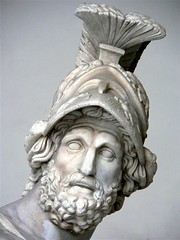No plotting method is perfect—though a lot of Hero’s Journey fans may tell you that the HJ comes close 😉 . However, academics and scholars have pointed out some weaknesses in using the Hero’s Journey as a template for a novel or movie.
On a scholarly level, many point out that Campbell’s theories (the basis for Vogler’s, if you’ll recall) may not really be supported by the full body of mythology and fairy tales. He uses the Western canon, and even then, not the worldwide canon, to support his theories, and within mythological studies today, most consider his work an overgeneralization at best.
 As Eileen mentioned in the comments yesterday, the Hero’s Journey can sometimes seem a little formulaic. However, that’s not always a bad thing. Romance, mysteries/thrillers/suspense, and inspirational novels are all “formulaic”—they have a prescribed formula, and if you break with it, well, good luck with the audience. Fans of those genres read them because they know how they’re going to turn out, and that reaffirmation is powerful.
As Eileen mentioned in the comments yesterday, the Hero’s Journey can sometimes seem a little formulaic. However, that’s not always a bad thing. Romance, mysteries/thrillers/suspense, and inspirational novels are all “formulaic”—they have a prescribed formula, and if you break with it, well, good luck with the audience. Fans of those genres read them because they know how they’re going to turn out, and that reaffirmation is powerful.
On the other hand, some do believe that adhering to the Hero’s Journey had produced a lack of originality and clichés in pop culture, especially in movies. (However, I still think it’s versatile enough to use—just try to give your story events a fresh twist. Isn’t that what we should be doing anyway?)
Finally, the Hero’s Journey isn’t all that kind to women—and not just because it’s not called the “Heroine’s Journey.” While it’s certainly possible to use a woman instead of a man as a protagonist, Campbell’s archetypal roles for women include mother, witch and damsel in distress. Not exactly a strong, empowered female role model, eh?
Critical analysis aside, however, the Hero’s Journey can still be a good model for plotting a story—even if it doesn’t magically give you the story events that will make your story a perfect, marketable marvel.
Next week, we’ll take a look at another plotting method that helps you not only plot but also pace your story events.
And before we end here, of course, we have to announce our winner of a free copy of The Everything Guide to Writing a Romance Novel. After taking out comments from me, Faye and her co-author Christie, and using the a random integer generator, the winner is <drum roll please>
Stephanie of Write Bravely
Congratulations, Stephanie. If you’ll send me your mailing address, I’ll pass it along to Faye and she’ll get the book out to you ASAP.
How has the Hero’s Journey fallen short for you and your story telling?
Photo by Mary Harrsch

